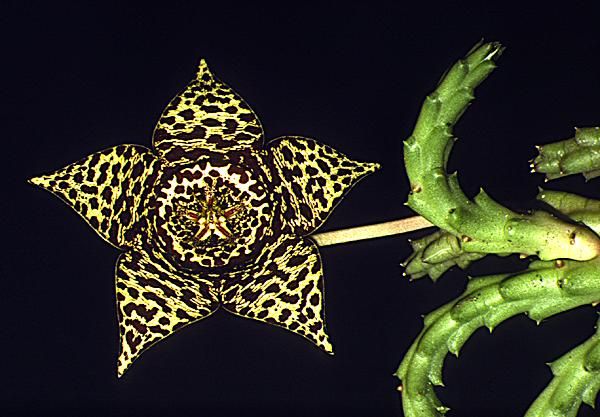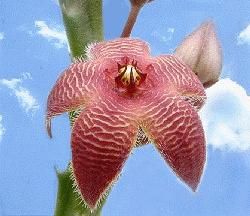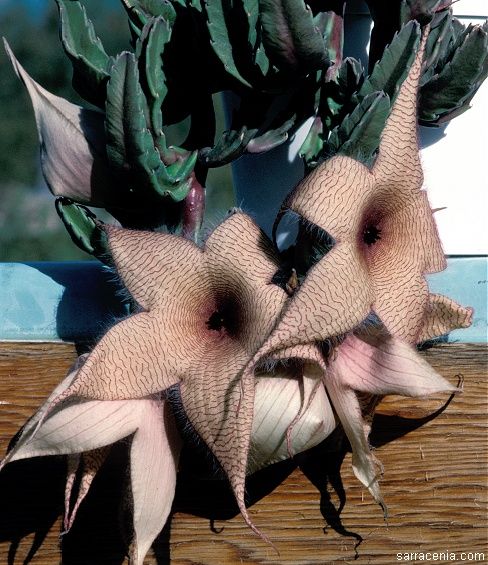Stapelia
Family: Asclepiadaceae
Origin: South Africa and Namibia
The genus Stapelia comprises a challenging and rewarding group of some 50 species of stem succulents, with unusual, often large five-lobed flowers, which may be red, purple or yellow, often with interesting banded patterns. The surface can be brightly polished or matted with hairs, and most species produce a putrid odour of rotting carrion to attract insects.
 Propagation: seeds or stem cuttings. Take cutting in spring when new growth begins.
Propagation: seeds or stem cuttings. Take cutting in spring when new growth begins.
Several species are fairly easy to grow. Others, often those with slightly hairy stems and the more unusual flowers, are more challenging and require careful watering (with some fertiliser) during the growing season and complete withdrawal of water during the winter months. A minimum winter temperature of 10 C is acceptable, providing that plants are kept absolutely dry. A heated growing bench or incubator may help delicate plants to get throught the colder months.
Many species live under shrubs in habitat and prefer light shade rather than full sun, but as interior plants they are kept also in full sun.
Clay pots are advisable for the more delicate species. Some growers prefer a mineral-only compost to minimise the chance of fungal attack on the roots. A layer of grit on the surface of the compost prevents moisture from accumulating around the base of the stems.

Some species and varieties:
Stapelia flavo-purpurea (Carrion Plant)
Stapelia gigantea (Carrion Plant)
Stapelia grandiflora (Carrion Plant)
Stapelia hirsuta (Carrion Plant)
Stapelia cactiformis (Larryleachia cactiformis)
Stapelia engleriana (Tromotriche engleriana)
Stapelia flavirostris (Stapelia grandiflora)
Stapelia melanantha (Orbeopsis melanantha)
Stapelia nobilis (Stapelia gigantea)
Stapelia variegata (Orbea variegata)
Articole asemănătoare
-
Plante ce prezic cutremure si atrag undele electromagnetice
Exista multe ciudatenii in lumea plantelor si fascinatia oamenilor pentru lucrurile iesite din comun a facut ca unele plante sa primeasca atribute din cele mai stranii...
-
Stapelia - Steaua serifului
Stapelia este o planta suculenta care provine din Africa de Sud si Namibia, si care include aproximativ 50 de specii.